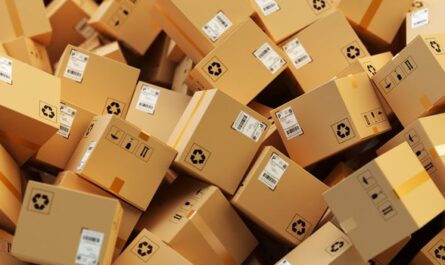As online shopping continues to grow in popularity, the needs of e-commerce packaging have shifted significantly from traditional retail packaging. Where packaging was once designed mostly with shelf appeal and quick purchasing in mind, e-commerce packaging must now focus on protecting products during shipping and providing positive unboxing experiences. According to recent surveys, over 90% of customers report that their satisfaction with an online purchase is influenced by the quality of the packaging protecting the product during transit. With consumers now accustomed to one-day and same-day delivery, protecting products safely and securely while in transit is of utmost importance.
Sustainable and Eco-Friendly Materials
In addition to effective protection, packaging must also consider sustainability. Many online shoppers report that the environmental friendliness of packaging influences their perception of brands. As such, sustainable and recyclable materials are increasingly important in the e-commerce space. Companies are exploring alternative packaging materials like recycled paper, plant-based plastics, and compostable boxes. While upfront costs may be higher for these materials, they can help brands appeal to environmentally-conscious customers and improve their public image. Studies show over 80% of Millennials are willing to pay more for a product if it comes in sustainable E-Commerce Packaging. As environmental issues increase in priority for many, investing in eco-friendly e-commerce materials is a smart long-term choice for brands.
Customizable Packaging Options
While protection and sustainability are key considerations, packaging also allows for more customization than traditional retail packaging. Since individual products are packaged and shipped separately, businesses have an opportunity to personalize each customer’s unboxing experience. Options like customizable box design, personalized messages or labels, inclusion of promotional materials or complimentary samples, and interactive elements can all enhance how the customer perceives the brand. This level of personalization helps online retailers form stronger connections with customers and build loyalty, even without a traditional in-store experience. The right packaging provides tangible brand interactions that traditional advertising struggles to match.
Packaging Innovation for Unique Products
In addition to basic protection and experience customization, certain categories of e-commerce products also require specialized solutions. For example, fragile items like glassware, electronics, or delicate clothing pose unique challenges. Companies developing innovative packaging solutions tailored for specific product categories can gain an advantage. Some examples include expandable air bags or cushioning for added protection, self-assembly designs to keep assembled products compact, and multi-purpose boxes which can function as both shipping containers and end displays. For large, bulky, or oddly shaped objects, custom molded designs provide safe containment that wouldn’t be possible with off-the-shelf packaging. These innovative solutions give brands reliability and competitive differentiation for shipping more complex products online.
Analytics and Performance Tracking
Modern packaging allows brands to leverage data analytics in new ways. Packaging embedded with RFID tags or QR codes enables tracking of each individual item’s journey from warehouse to doorstep. This provides valuable data on factors like damage rates, delays, or delivery exceptions based on shipper, route, or geographic region. Analytics tools can even monitor customer unboxing experience metrics like time elapsed from delivery until product removal. Leveraging such performance tracking data, companies can optimize packaging designs, fulfillment strategies, and distribution partnerships to continuously improve the customer experience. What’s more, interactive elements on packaging open new engagement opportunities through social media sharing or easy product registration/warranty forms. These digital integrations result in richer data that enhances the customer relationship beyond the single transaction.
Transition Challenges and Considerations
While the potential benefits of e-commerce optimized packaging are clear, transitioning established brands presents real challenges. Legacy packaging lines and formatting may require equipment upgrades or replacements to support new specifications. Maintaining consistent brand messaging across new and old designs during an changeover period is equally complex. Additionally, supply chain partnerships need flexibility to adapt to custom package needs without impacting fulfillment speed or margins. Lastly, brands must consider their entire product line and how well current packaging transfers before investing in a transition strategy. A careful, phased approach involving packaging trials, market testing, and alignment across departments helps avoid potential pitfalls in execution. With deliberate planning and the right packaging innovation partners, established brands can smoothly modernize their approach while maximizing ROI.
Rising to E-Commerce Packaging Challenges
As online shopping continues growing globally, fulfilling rising customer expectations around both the essential protection and unboxing experience enhances competitiveness for brands operating online marketplaces. Meeting evolving industry standards necessitates specialized packaging solutions attuned to product type, shipping considerations, and the demands of modern consumers.
While embracing change introduces inherent business complexities, companies that successfully invest in packaging innovation reap dividends through strengthened brand affinity beyond the transaction. Looking ahead, the most progressive e-tailers will push design boundaries, drive new sector standards, and expand what constitutes an effective package — always with the foremost goals of customer delight, reliability, and responsible operations. Overall, by thoughtfully rising to meet the unique demands of e-commerce, forward-looking businesses solidify their value for internet shoppers around the world.
*Note:
1. Source: Coherent Market Insights, Public sources, Desk research
2. We have leveraged AI tools to mine information and compile it
About Author - Money Singh
Money Singh is a seasoned content writer with over four years of experience in the market research sector. Her expertise spans various industries, including food and beverages, biotechnology, chemicals and materials, defense and aerospace, consumer goods, etc. LinkedIn Profile




